
l o v e w h e r e y o u l i v e

l o v e w h e r e y o u l i v e
Alpine has been one of the many quickly-growing cities of Utah since the 1970s, and especially the 1990s. It is located on the slopes of the Wasatch Range north of Highland and American Fork. The west side of the city runs above the Wasatch Fault. The city is so named because when it was first settled, the Latter-day Saint prophet Brigham Young visited and said the town reminded him of the Swiss Alps.
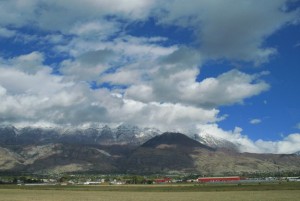
American Fork. An estimated 80 percent of the city’s population are members of The Church of Jesus Christ of Latter-day Saints, or Mormon, which is one of the state’s highest percentages. The nearest temple is the Mount Timpanogos Utah Temple. The town and surrounding area of Utah Valley is nicknamed “Happy Valley” in part due to the popularly depicted high standard of living (i.e. lower crime rates, small town atmosphere, a more stable economy in terms of wages and job opportunities, a more social conservative culture, and community urban planning to prevent “urban blight”).
Search for American Fork Homes
Cedar Hills began growing rapidly during the 1990s, with the largest growth rate of any municipality in the state. It is located east of Alpine and Highland on the slopes of Mount Timpanogos. The city of Cedar Hills welcomes and encourages businesses within its community. Much of the local business is made up of small, locally owned home occupation businesses.
Eagle Mountain is located at the western and northern bases of the Lake Mountains in the flat Cedar Valley northeast of the city of Cedar Fort. According to the United States Census Bureau, the city has a total area of 41.7 square miles. SR-73 (Lehi Main Street) and Eagle Mountain Boulevard provide access to the city from Utah Valley and Salt Lake Valley. The Utah Department of Transportation recently built a western freeway for the Salt Lake Valley (the Mountain View Corridor), which connects to SR-73 only a few miles from the city. The area is home to a number of natural landmarks, including a site along the original Pony Express Trail and 1,800-year-old rock art petroglyphs carved by ancient Fremont Indians.
Search for Eagle Mountain Homes
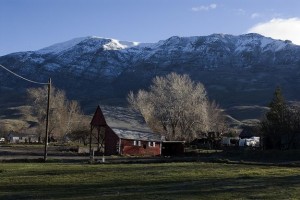
Highland was settled by homesteaders in the 1870s. It was named by Scottish Mormon immigrants who felt the area resembled the highlands of Scotland. It is the gateway to the Timpanogos Cave National Monument, the Alpine Scenic Loop Byway, and includes a portion of the Bonneville Shoreline Trail, a multiregional bike trail encompassing 280 miles. Each year the Highland Fling is held to commemorate the beginning of Highland with a parade, fireworks, and a weeklong celebration.
Lehi
Located in northern Utah County, Lehi is a growing city that was originally settled by Mormon pioneers. It was incorporated into the sixth Utah city on February 5, 1852. The downtown area has been designated the Lehi Main Street Historic District by the National Park Service, and is on the National Register of Historic Places. Lehi has been transitioning from an agricultural economy to a technological economy. With Micron Technology, IM Flash Technologies, and Intel Corporation headquartered in Lehi, 1 out of every 14 flash memory chips in the world is produced in Lehi. Adobe Systems based one of its U.S. buildings in Lehi. It is home to about 900 employees. IASIS Healthcare is building Lehi’s first hospital, to be completed in 2015. Microsoft has an engineering department specializing in Microsoft Surface technologies. Other Thanksgiving Park tenants are Sorenson Capital, Agel Enterprises, ProPay Inc., Vucci Technology Solutions and Private Capital Group. Xango also has its main offices in Lehi.
Lindon has an abundant cultural and historical background. Originally settled in 1861, Lindon began as pioneers moved into what was then the Lindon grazing land. The town was originally named “String Town” because of the way the houses were strung up and down the street. An old linden tree growing in town in 1901 inspired the present (misspelled) name. Over the past century Lindon has seen organized development, but it has tried to remain true to its motto: “Lindon: a little bit of country”.
Orem. Orem is adjacent to Provo, Lindon, and Vineyard and is about 45 miles south of Salt Lake City. Orem is one of the principal cities of the Provo-Orem, Utah Metropolitan Statistical Area, which includes all of Utah and Juab counties. The population was 88,328 according to the 2010 census, making it the fifth-largest city in Utah. Utah Valley University is located in Orem. Orem uses the moniker “Family City USA”. In fact, in 2010 Forbes rated it the 5th best place to raise a family. Orem was incorporated in 1919.
Payson is the site of the annual Scottish Heritage Festival, held every July. Other annual festivities include a salmon supper, held every August, and the annual Onion Days festival, held every Labor Day weekend. The city also has band concerts in the Memorial Park, and has had such concerts since the early 1950s. Payson was originally named Peteetneet, after a Ute Indian chief. However, the pioneering residents decided to change the name to Payson, after James Pace, due to the fact that no one outside of Payson knew how to spell or say Peteetneet. Payson celebrates its heritage through monuments such as the historic Main Street, Peteetneet Museum and Cultural Arts Center, and several Payson Historical Society markers that note houses and other sites in the city over a hundred years old.
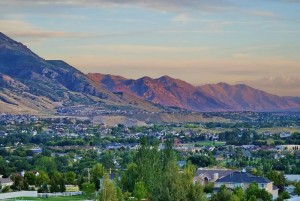
Pleasant Grove. On July 19, 1850, William H. Adams, John Mercer and Philo T. Farnsworth, Mormon pioneers sent by Brigham Young, arrived at the area now known as Pleasant Grove and staked out farms. A small community was established September 13, 1850.Pleasant Grove is home to a unique summer festival, Strawberry Days, the longest continuing community celebration in Utah to date. The city hosts the annual festival, usually during the third week of June. A rodeo held in conjunction with this festival brings competitors and spectators from throughout the West. The festival includes parades, a carnival, pageants and other activities. Although no strawberries are currently grown commercially in the city, the festival takes its name from a time when strawberries were a major economic activity in the city.
Search for Pleasant Grove Homes
Provo. The third-largest city in Utah, Provo is located 43 miles south of Salt Lake City along the Wasatch Front. Provo is the county seat of Utah County and is the largest city in Utah County. With a population at the 2010 census of 112,488, Provo is the principal city in the Provo-Orem metropolitan area, which has a population of 526,810. It is the third-largest metro area in the state behind Salt Lake City and Ogden-Clearfield. The city is home to Brigham Young University, a private higher education institution, which is operated by The Church of Jesus Christ of Latter-day Saints. The city is a key operational center for Novell and has been a focus area for technology development in Utah. The city is also home to the Peaks Ice Arena, which served as a venue for the Salt Lake City Winter Olympics in 2002. Sundance Resort is located 13 miles northeast in Provo Canyon.
On April 17, 2013, Provo announced that it would be the third metropolitan area in the United States to have Google Fiber, by purchasing an existing city-owned fiber optic network.
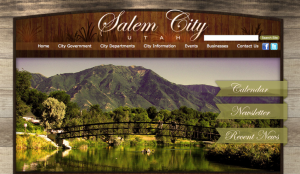
Salem. Known as “Summer Spring” by the Indians, and “Pond Town” by early settlers. Salem was later named after Salem, Massachusetts, the birthplace of Lyman Curtis, to honor his contributions to the community. Curtis was known to be good with a gun, and was a bodyguard for the prophet Joseph Smith. He was a member of Zion’s Camp. He also was in the discovery party of nine riders that first rode on horseback into the Salt Lake Valley in July 1847.
Santaquin
Saratoga Springs has an elevation of 4,505 feet. It is part of the Provo–Orem, Utah Metropolitan Statistical Area. The city is a relatively new development along the northern shores of Utah Lake. It was incorporated on December 31, 1997 and has been growing rapidly since then. The population was 1,003 at the 2000 census, while the 2010 census stated population at 17,781, meeting expectations of growth despite the state of the economy. Although Saratoga Springs was a town in 2000, it became a city in 2001.
Search for Saratoga Springs Homes
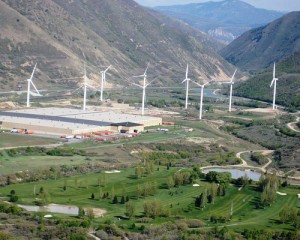
Spanish Fork was settled by Mormon pioneers in 1851. Its name derives from a visit to the area by two Franciscan friars from Spain, Silvestre de Escalante and Francisco Domínguez in 1776, who followed the stream down Spanish Fork canyon with the objective of opening a new trail from Santa Fe to California. Between 1855 and 1860, the arrival of pioneers from Iceland made Spanish Fork into the first permanent Icelandic settlement in the United States.Spanish Fork City hosts five large-scale events each year: Fiesta Days, Icelandic Days, the Harvest Moon Hurrah, the Festival of Lights, and the Festival of Colors.
Springville is known as “Art City” due to its strong development of the arts. Springville is home to the Springville Museum of Art, Utah’s oldest museum for the visual fine arts. The museum, housed in a historic Spanish Colonial Revival-style building, showcases collections of many well-known artists, both local and national. Springville is a thriving community which has experienced steady growth over the past ten years. The current population is projected to grow to more than 50,000 over the next ten years, in line with the expected future expansion of its commercial, office, retail, and industrial sectors along the city’s I-15 corridor.